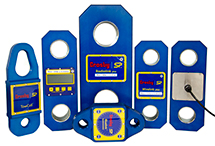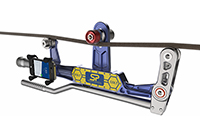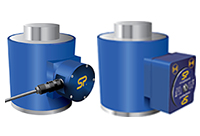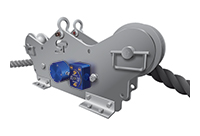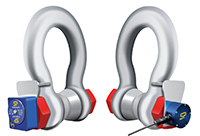SP Newsletter Archive
At SP, we get asked that question many times every day, but the answer is nearly always different. There are many factors to consider before providing an existing or prospective customer with an accurate cost for a specific solution.
Firstly, do you want to measure load or force in tension or compression?
If you want to measure in tension how do you want to attach the load to the load cell?
Often, a set of shackles from manufacturers such as Crosby or GN Rope will be used to rig our loadlink or dynamometer-style load cells. In other applications headroom is limited so a load shackle solution will be required rather than a loadlink.
(It’s probably becoming clear why one size never fits all in the world of load cells.)
If you are measuring in compression—perhaps weighing a large item such as an offshore jacket—how many load cells do you need to spread the load across the module? Further, what data do you need to capture? Total weight, individual weight or centre of gravity? SP has software that can calculate all of this in real time!
Most SP load cells are wireless and you have a choice of a handheld display or software that can be installed on a Windows tablet or laptop. Data logging and proof test certification are possible with SP software solutions.
Another important consideration is the environment where the load cell will be used. Temperature, rain and humidity are just a few key factors. Maybe the load cell will be submerged and used subsea. If so, what depth will it be submerged to? And for how long?
We have a team of load monitoring specialists and state-of-the-art systems that calculate prices quickly and efficiently contact us now and let us take the load.
Safety, efficiency and value below-the-hook, or elsewhere, are best achieved by selecting the right tool for the application in hand.
There are cheaper load cells available?
Yes, there are many products available in the market place and we have seen them from time to time in our test facility. We have witnessed hooks bend under load, casings crack, poor electronics and accuracy that is at best ‘a guess’.
When you are buying rigging gear such as a shackle or a sling you would always purchase the safest and best quality products available why would it be any different with a loadcell or dynamometer?
Our materials are all aerospace grade and traceable back to the smelting plants, our electronics are all European manufactured and comply with all the latest standards. Calibration and proof testing is all undertaken on testing machines that are verified by 3rd parties to national & traceable standards.
None of this means we can produce a ‘cheap’ loadcell but you can be assured it is safe, accurate and has a long history of high performance in the harshest environments across the globe.
Remember - In our 40 years of manufacture SP have never had a failure – ever.
Test Method for Calibrations
The load cell was calibrated comparatively against a calibrated load testing rig of the relevant capacity. It was installed into the test rig using the correct fitting rated to the relevant capacity of the unit under test.All fittings were inspected by the engineer for alignment into the rig prior to any load being applied to the system.
Prior to the commencement of the test the unit under test was loaded to full capacity and held for 1 minute, then released to zero applied load and left to stabilise for 1 minute to exercise the mechanical portion of the load cell.
Each calibration point was taking in ascending order, the results of each reading are tabulated below.
All measurements are traceable to national standards.
Electrical
The load cell was calibrated comparatively against a calibrated load testing rig of the relevant capacity. It was installed into the test rig using the correct fitting rated to the relevant capacity of the unit under test.All fittings were inspected by the engineer for alignment into the rig prior to any load being applied to the system.
Prior to the commencement of the test the unit under test was loaded to full capacity and held for 1 minute, then released to zero applied load and left to stabilise for 1 minute to exercise the mechanical portion of the load cell.
A Calibrated digital multi meter was used to measure the output of the load cell
Each calibration point was taking in ascending order, the results of each reading are tabulated below.
All measurements are traceable to national standards.


